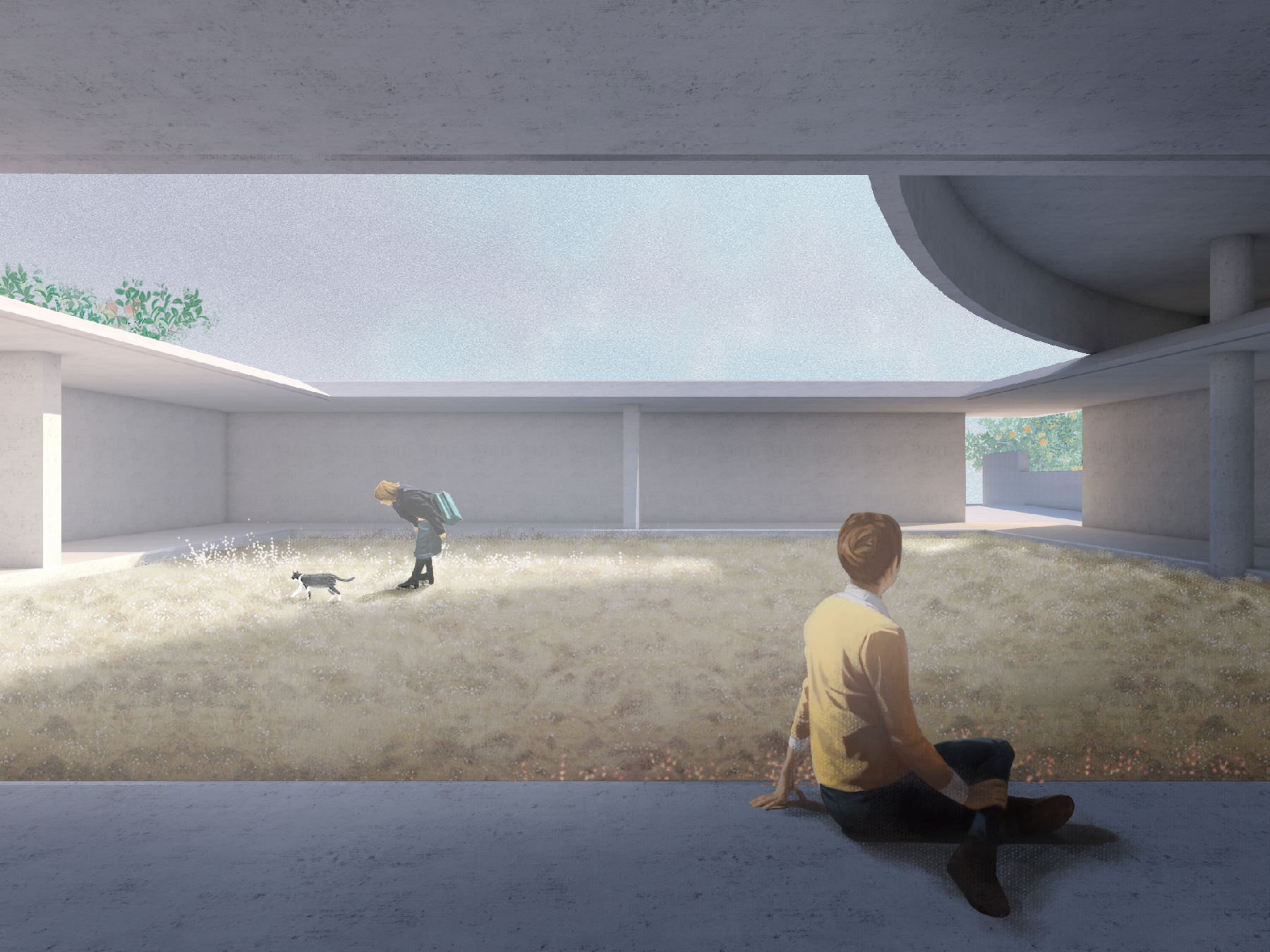
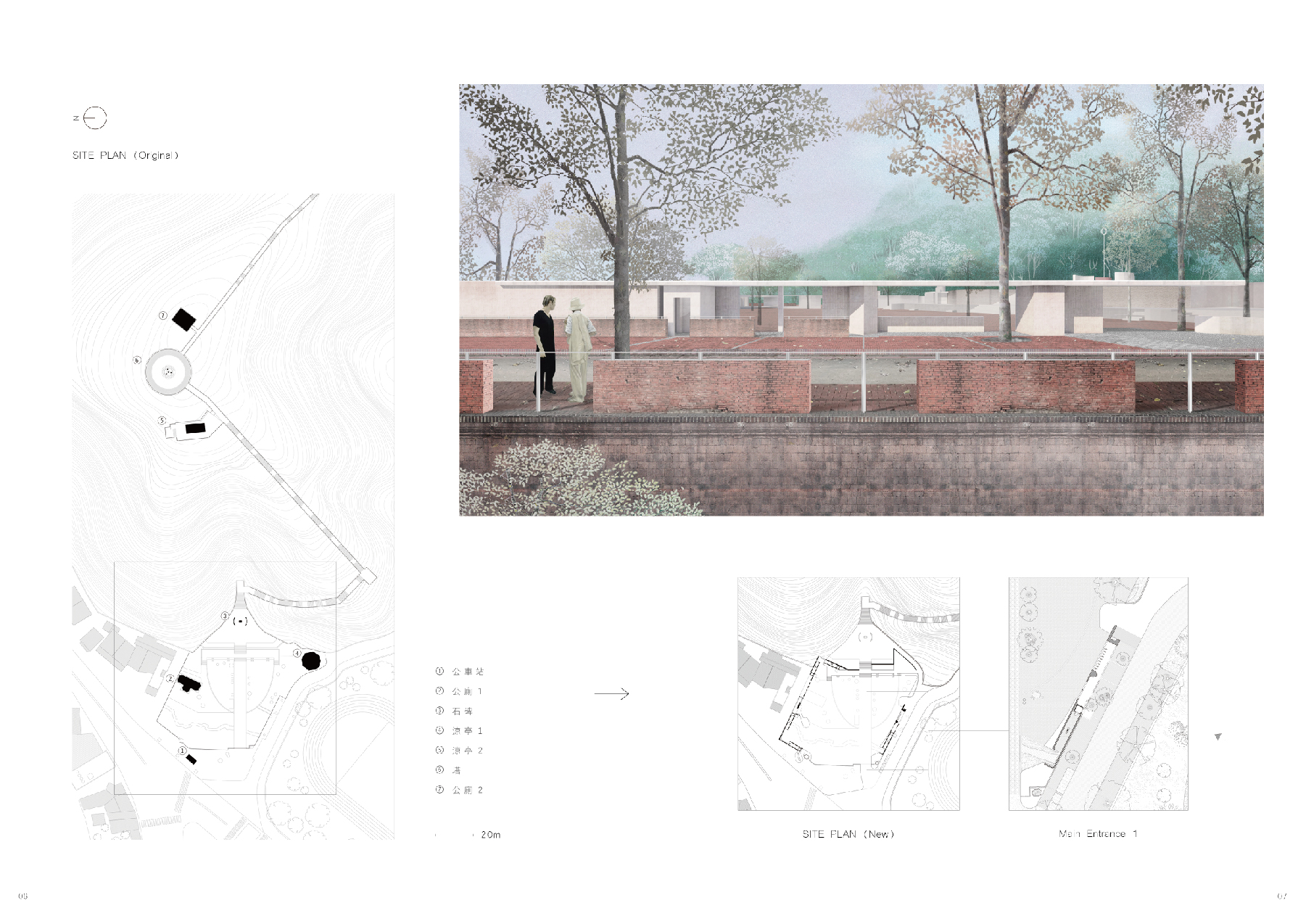
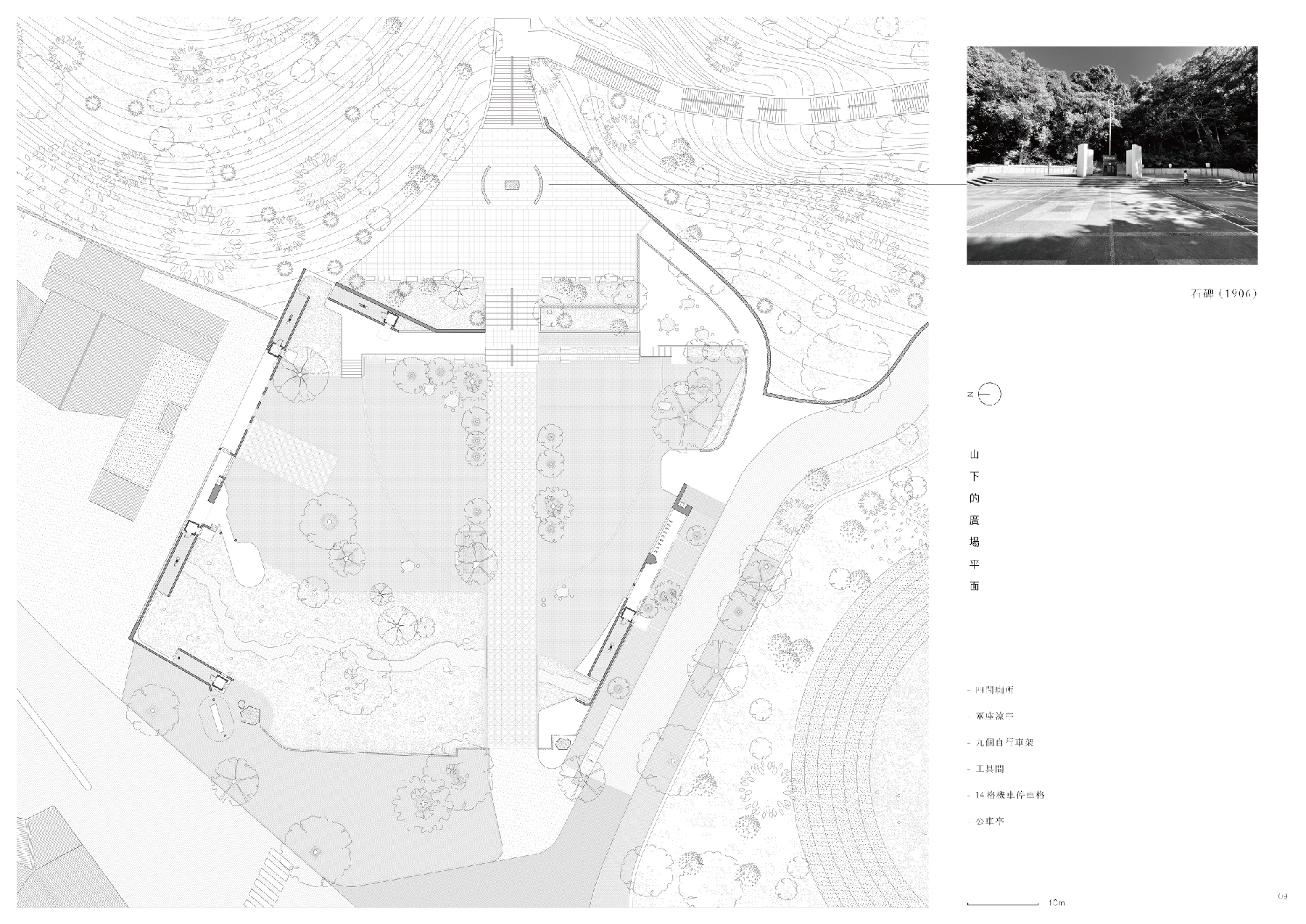
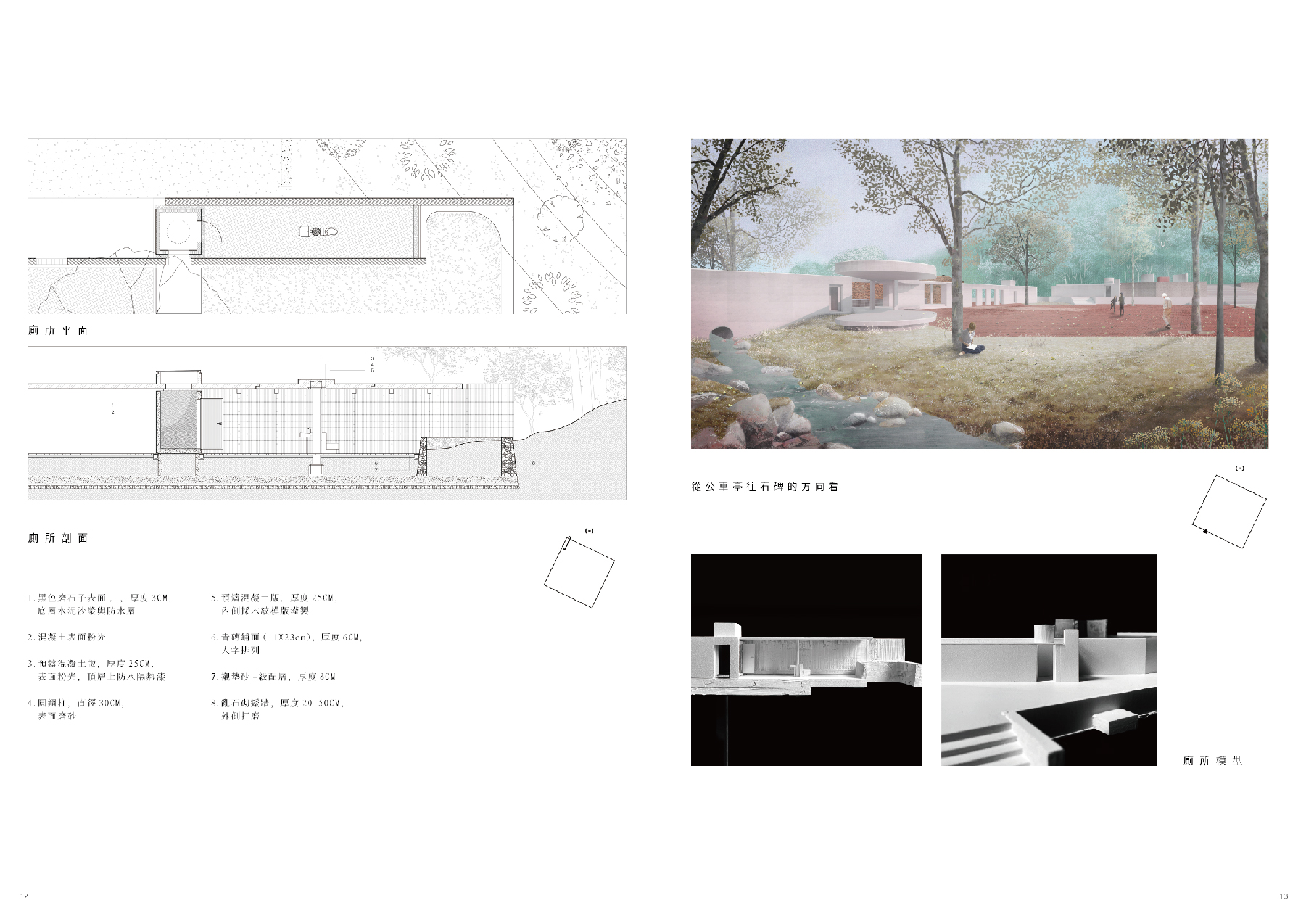
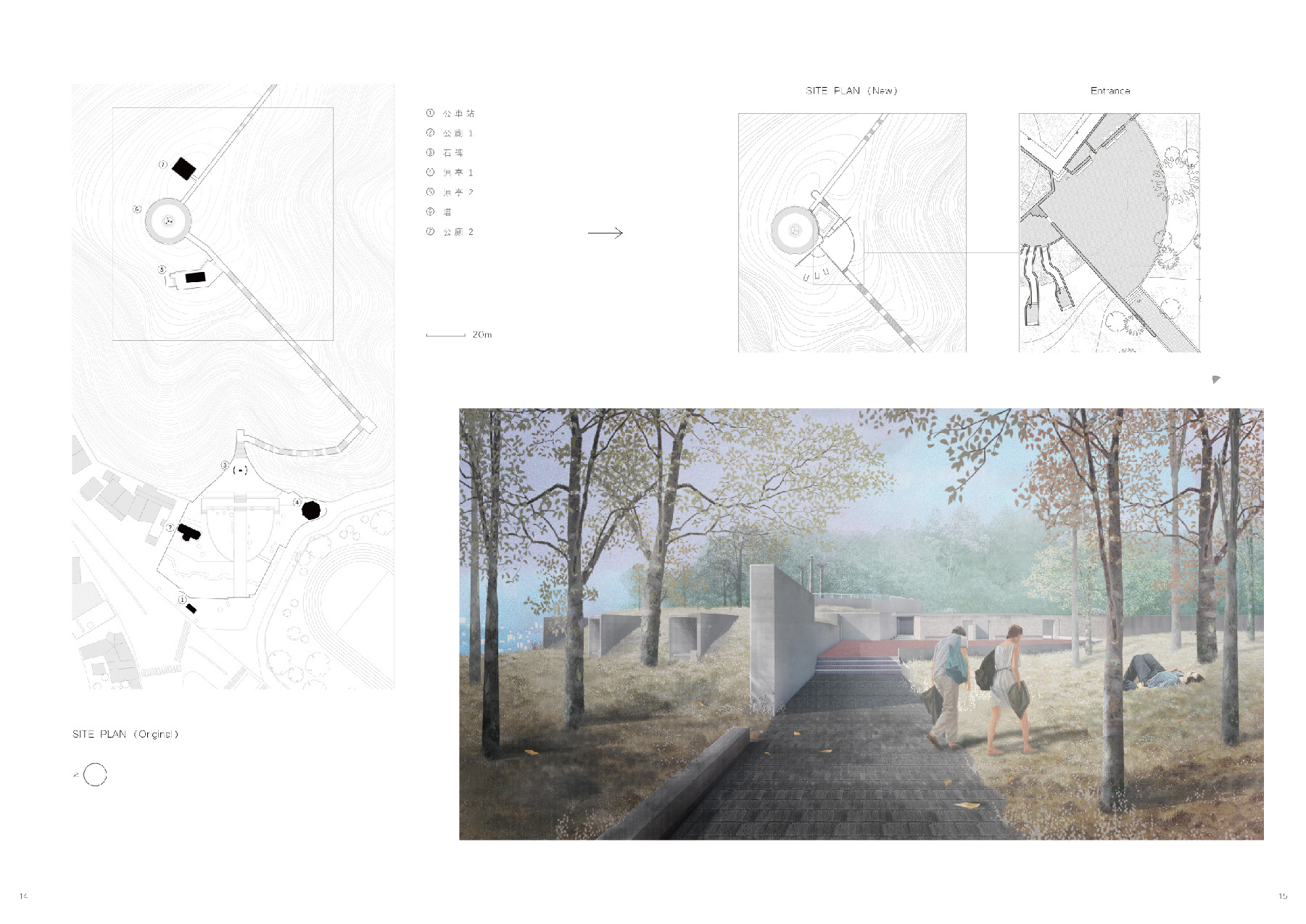
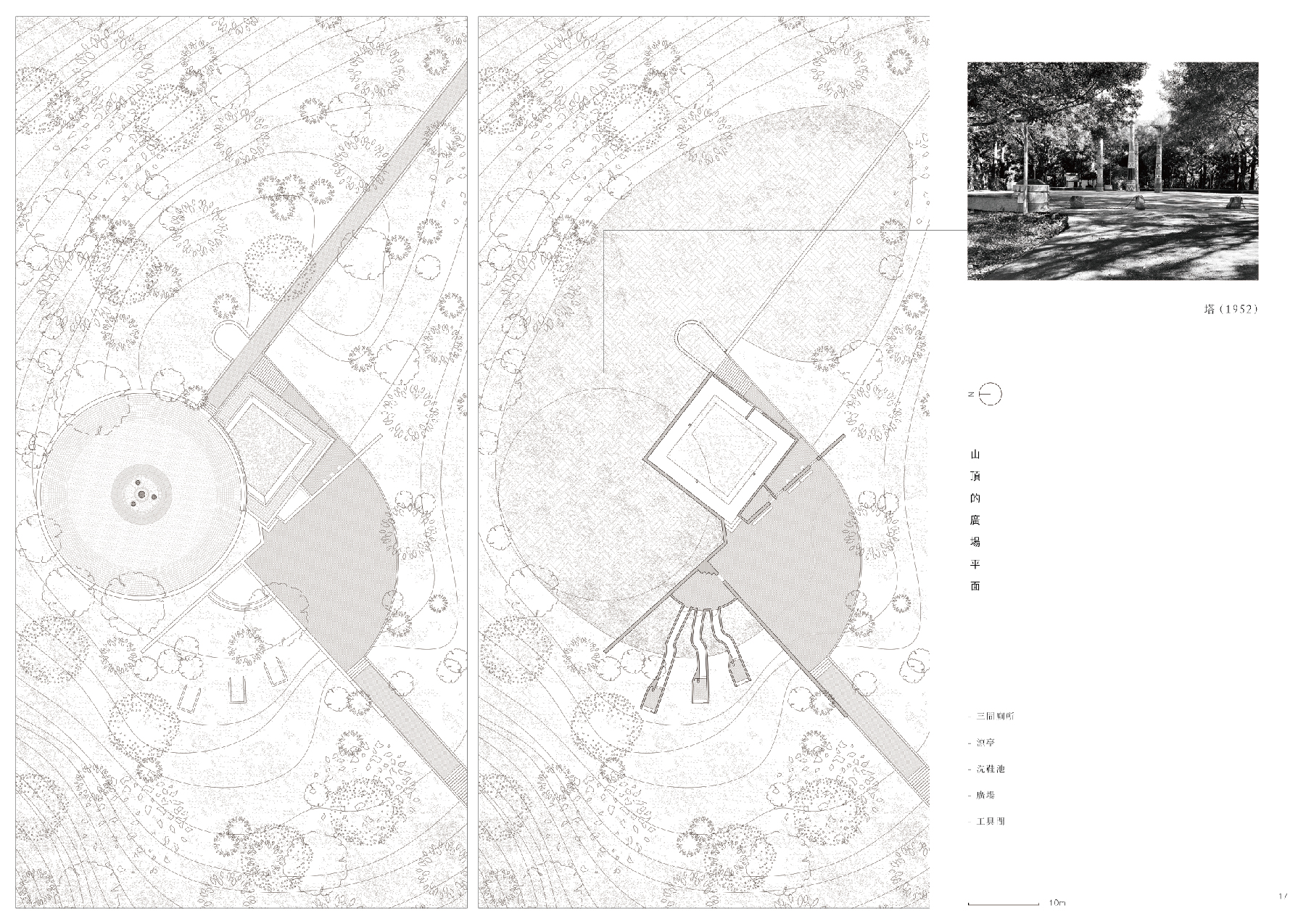







Reconstruction of Public Toilets in the Center and the Center Monument
台灣 / taiwan
謝丞昱 / HSIEH,Cheng-Yu
如何以固著的形式描述變動的特質?
埔里東北一角的虎子山,正好是台灣兩個中心點所在。1906年的中心點位在山腳,是塊石碑;1952年的中心點則位在山頂,是一座塔。虎子山記載了「中心」五十年來的移動軌跡,以及至今百年間跟隨塔與石碑而出現的登山道及周邊設施。
建築以「並置」的基本態度,去和既存的「中心」對話。不去否定、破壞,而是藉「同時存在」將原先聚焦的目光移至物與物的倆倆之間。以建築替不同的「中心」描一個共同的邊。
How to describe changing characteristics in a fixed form?
The Huzi Mountain in the northeast corner of Puli Town happens to be the central point of Taiwan, and there’re two of them.The center point in 1906 was a stone Stele at the foot of the mountain, and the center point in 1952 was a Tower at the top of the mountain.
With “juxtaposition” to talk to the existing “center”. Instead of denying and destroying, with “simultaneous existence” to get focus from a thing itself to in between.Architecture drew a common edge for different “centers”.